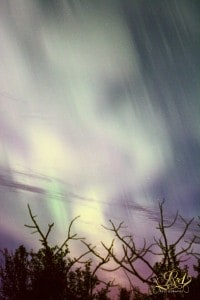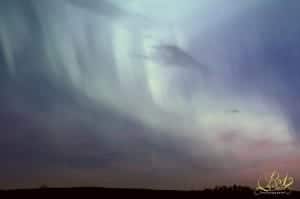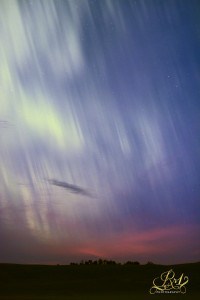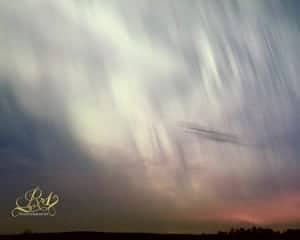
The truth is almost any DSLR can capture the Aurora Borealis. The Aurora is also visible year round, and you don’t have to live in Alaska to see the beautiful Northern Lights. True, you probably won’t see them if you live in Arizona or Texas, but you will see them in some of the northern United States, all of Canada, and of course Alaska.
What equipment do you need?
- A DSLR camera, with a lens capable of a wide aperture (it does not have to be an expensive one). The trusty old nifty fifty 1.8 will do the job for around $150.00, and most photographers already have this lens on hand. I used my 50mm f/1.8 for the photos in this article. A wider angle lens will always be the better choice if you have one.
- A fully charged battery
- A tripod
- A shutter release cable or wireless trigger. If you don’t have one, the timer built into the camera will work. Remember: a shutter release cable will give you more control than a timer and enable you to keep the shutter open as long as you want to. It is essential to use some sort of device to control the shutter to reduce vibration.
- Don't forget a flashlight, since you will be walking and working in the dark.


I looked online and found a lot of really technical articles that I didn't totally understand and that just didn't work for me. So instead, I came up with this idea and it works! If the moon is out, focus on that. If that's not working, find a far-away house or a light off in the distance (communication towers work great) and focus on that. (This works for all night photography and it's simple and easy.) I also use back button focus, but any method will work and I recommend you use the method you are comfortable with.
This is where things get a little more complicated and this is where the trial and error happens. Each camera will react to low light photography in a different way. I used a Nikon D7100 for these photos. It does well with high ISO and I could have gone higher, but didn't. Why? You want to keep the ISO as low as possible. This will give you a photo with less of that “grainy look” (better known as a noisy photo). However, there is one other thing to consider: the Earth is a moving object. Those twinkling stars you see? Your camera sees them differently. Leave the shutter open for too long and you will have star trails. Our focus is the Aurora, so try and avoid star trails here. This means you'll need a higher ISO and a faster shutter speed.

Next set your aperture. Again you will have to experiment. The moon is a factor here: is it a full moon or a quarter moon? This will determine what your aperture should be. If it's a full moon, close your aperture a bit. If it's a quarter moon you may want to open it a bit. I normally start at about f/3 and adjust according to the available light in the environment. Below is a simple chart to help you get started.
| f/ratio | 400 ISO | 800 ISO | 1600 ISO |
|---|---|---|---|

So now you have the tools and knowledge needed to go get some awesome shots of the beautiful Northern Lights. Plan to go out at least a few times so you can experiment with different settings on your camera as well as different lighting situations in the environment around you. You can capture some really incredible things with some patience and practice!

The northern lights are not visible in all of Canada. Much of Canada is way less than ideal for viewing the northern lights. That’s just an assumption
Hi. This may be a little late. I went in March 2016 and went with a group called Artic Shots. They are professional photographers that take people out to shoot the Northern Lights. They are very good and VERY helpful and do their best to make it memorable. We went for several hours with them. They monitor the kp strength and only go when there is a good possibility.
I should say I was in Iceland
I wish I’d read this a week ago. I was in the north of Scotland when the Aurora made an appearance two nights running and I didn’t know how to get a decent picture. I saw mainly green with my naked eye and the camera was able to make it appear even stronger. Just didn’t have a tripod so the pictures are blurred. Iceland can be a hit or a miss – we went in December and never saw the Aurora. Have seen some stunning photos taken by others from the Scottish mainland and islands.
I go to Iceland on the 14th of December I have a Nikon Coolpix P610, can this be used to capture the northern lights? If so, how?!
I have a Nikon b500. Is this ok? And what should I program it to so I can get clear pictures? Thanks
Traveling to Sweden mid October 2017. Any chance of seeing (and photographing) the Aurora. Shooting a Canon 1dx. Would you recommend I use a 50, 25-70 or a 16-48mm?